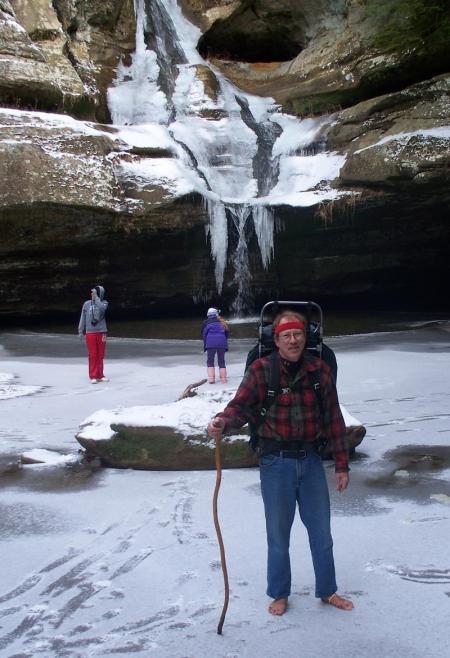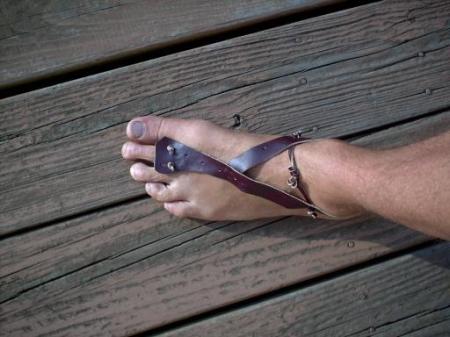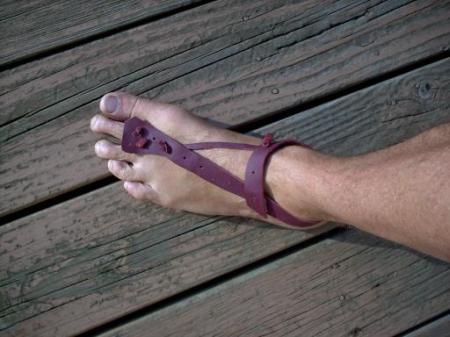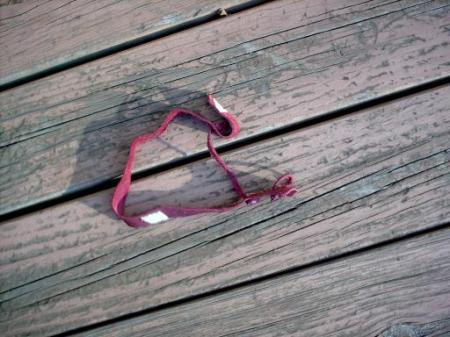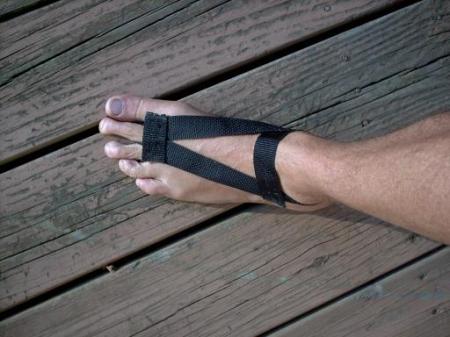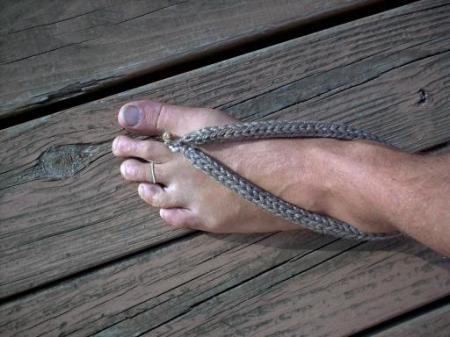[This blog is now defunct. You can also read this article at my own blog, Ahcuah, along with a bunch of new and (I think) interesting articles.]
No, it’s not some obscure sexual disease. It’s a human physiological response that allows us, in many cases, to go out barefoot for longer and in colder temperatures than we might have thought possible.
CIVD stands for “Cold-Induced Vasodilation”, and it describes what the body does when your extremities get cold. What happens is that, when exposed to cold, the body restricts blood flow to your extremities. However, if your body core temperature is maintained (that is, you are otherwise dressed warmly), your body, after a bit of time, will send extra blood to those extremities to warm them back up. It dilates (opens) the blood vessels, hence the term “vasodilation”. This automatic response is of course very important to the Inuit, who need to be able to, for instance, thread hooks for fishing in pretty extreme conditions.
It takes about 8-10 minutes for this warming to happen. The body then cycles this cooling/warming. After a while in the warm state, it will restrict the vessels again and your extremities will get cold again. My guess is that the body is testing to see if core body temperature really can be maintained. But then, after a bit, vasodilation occurs again, and the extremities warm up again. This cycle can happen a few times before a steady-state is arrived at.
This response can be conditioned. Practicing in the cold can speed up the vasodilation response. You can see that in this graph:

Onset of CIVD
from “Effect of chronic local cold exposure on finger temperature responses”. The control shows that, in unconditioned people, it can take 10 minutes for vasodilation to occur. However, for this particular person, training (or conditioning) reduced that to 2 minutes, and the (in this case) finger never got as cold as for the unconditioned control.
It turns out, however, that some people do respond better to conditioning that others. This graph shows pretty much the best-case scenario. Some people showed only a minimal response to conditioning.
So, how does this apply to barefooters? Well, it means that, in reasonably chilly temperatures, we may be able to do more than we think. If we are not conditioned, our feet may get cold before that magic 10 minutes and we may give up just before the body is about to rewarm them. By being aware of this physiological reaction, we may be able to take advantage of it to enjoy going barefooted longer.
One thing to keep in mind is that we must make sure we keep our core body temperature warm. There’s an old saying, “If you feet are cold, put on a hat.” It’s a myth that “ 40 to 45 percent of body heat” is lost through the head, but, as usual, even the debunkings need to be more carefully examined. Yes, if you are stark naked then no, you will not lose 40 to 45 percent of body heat through your head. But if you are well-bundled up, and only your head is uncovered, of course you will be losing most of your heat there. Adding a hat could tip the balance between being cold and being warm. So, once again, if you are barefooting in the cold, do make sure to bundle yourself up well. Members of the Society for Barefoot Living have found that ankle warmers do a nice job of helping keep blood warm all the way down to the ankle so that it can do a good job keeping the feet warm.
I was recently on a barefoot hike in which I was able to observe CIVD directly. The temperature was about 30° (-1C). There was about an inch of snow on the ground, but its thickness varied depending on which part of the trail I was walking on. Some of it had had enough other people walk on it to have removed the snow while other parts had the full one inch.
(Side note: walking in snow is often colder than just walking on cold ground. On cold ground, I have fairly thick soles that do a good job of insulating my feet from that cold. However, it seems that getting snow on top of my feet, and particularly on top of my toes, is what really chills them down quickly.)
My CIVD response seemed to take a while to kick in, even though my core body temperature was just fine, since my trails took me up and down some hills. At about the 6-minute mark my feet were definitely feeling cold. But at the 8-minute mark, the CIVD kicked in and my feet suddenly felt perfectly comfortable. By 26 minutes, though, they were feeling cold again (that’s the cycling). At 30 minutes they were toasty again, and they remained just fine for the next half hour they stayed that way, even when I was getting snow on top of them.
I did want to make sure that it wasn’t the case that my feet had gone numb, fooling me into thinking they were warm. To test that, I looked for a twig, shut my eyes, and then tried to feel for the twig with just my feet. I found it fine, and was able to pick it up with my toes. Good check.
Finally, another word of warning. Be aware of what you are doing, and do not stretch beyond your limits. If you foolishly go out in zero degree weather and wait 10 minutes for CIVD to kick in, you will have frozen your feet long before it has a chance to. Worse than that, if you damage your feet that way, you won’t be able to enjoy regular barefooting, and you’ll never be able to train your feet to enjoy cooler temperatures.
Also, in a comment to the previous entry, Barefoot Josh warned about cold and wet conditions. Even wet conditions alone can be a bit of a challenge, because your feet absorb the water and get soft. When soft, they don’t protect as well against much of anything. Adding cold on top of that (when your skin is less pliable) just aggravates things. Again, while limits can be pushed, don’t push so hard you fall off a cliff.
So, yeah, I’ve got CIVD. And so do you.
